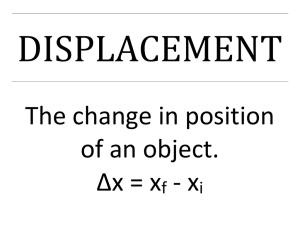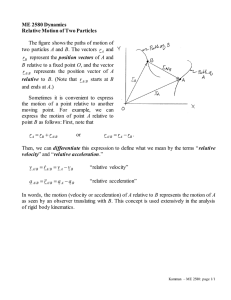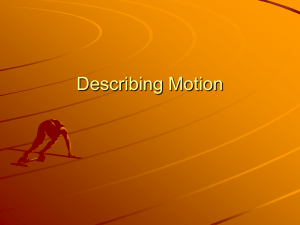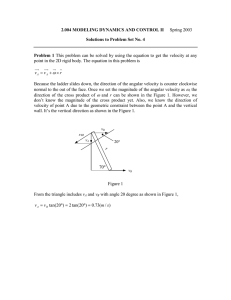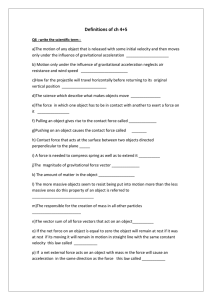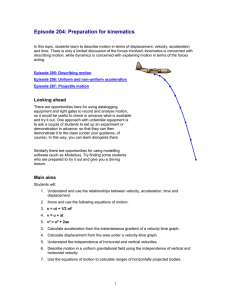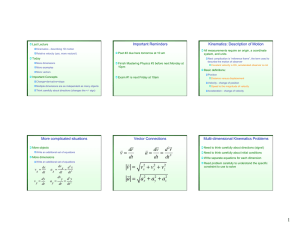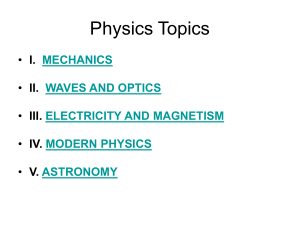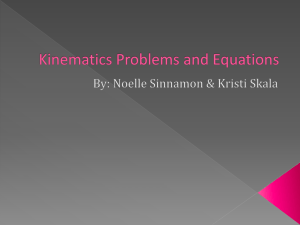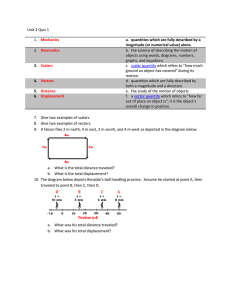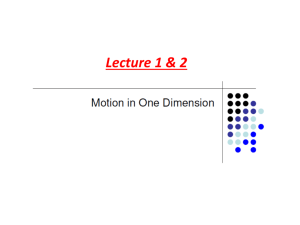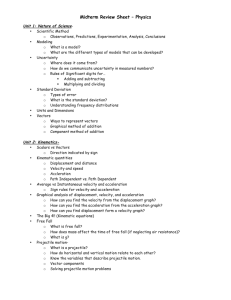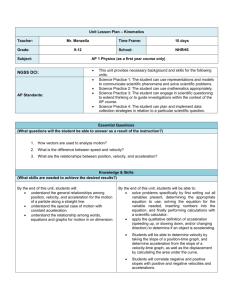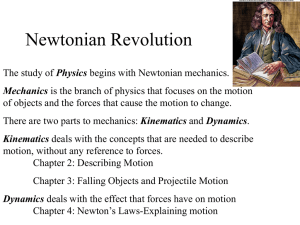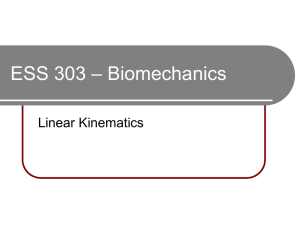PHYS 1111 Summary for Ch 5 through 8
advertisement
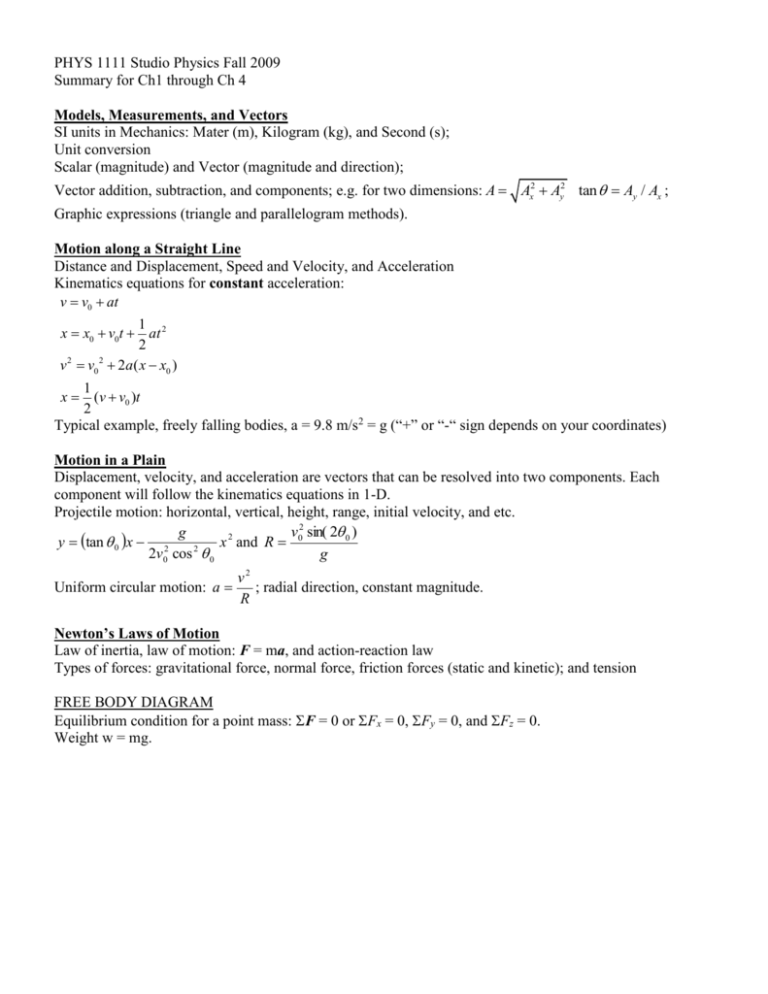
PHYS 1111 Studio Physics Fall 2009 Summary for Ch1 through Ch 4 Models, Measurements, and Vectors SI units in Mechanics: Mater (m), Kilogram (kg), and Second (s); Unit conversion Scalar (magnitude) and Vector (magnitude and direction); Vector addition, subtraction, and components; e.g. for two dimensions: A Ax2 Ay2 tan Ay / Ax ; Graphic expressions (triangle and parallelogram methods). Motion along a Straight Line Distance and Displacement, Speed and Velocity, and Acceleration Kinematics equations for constant acceleration: v v0 at 1 x x0 v0t at 2 2 2 2 v v0 2a ( x x0 ) 1 x (v v0 )t 2 Typical example, freely falling bodies, a = 9.8 m/s2 = g (“+” or “-“ sign depends on your coordinates) Motion in a Plain Displacement, velocity, and acceleration are vectors that can be resolved into two components. Each component will follow the kinematics equations in 1-D. Projectile motion: horizontal, vertical, height, range, initial velocity, and etc. v02 sin( 2 0 ) g 2 y tan 0 x 2 x and R 2v0 cos 2 0 g Uniform circular motion: a v2 ; radial direction, constant magnitude. R Newton’s Laws of Motion Law of inertia, law of motion: F = ma, and action-reaction law Types of forces: gravitational force, normal force, friction forces (static and kinetic); and tension FREE BODY DIAGRAM Equilibrium condition for a point mass: F = 0 or Fx = 0, Fy = 0, and Fz = 0. Weight w = mg.
